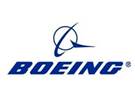Unit 2 Boeing Commercial Airplanes

The Boeing Company offers airplanes and services that deliver superior design, efficiency and value to customers around the world. There are more than 13,000 Boeing commercial jetliners in service. Boeing traces its history to aviation pioneer William Boeing who, in 1916, built the company's first airplane, a seaplane for two with a range of 320 nautical miles (515 km). Since then, Boeing has defined the modern jetliner and introduced the twin-aisle cabin, the glass cockpit and countless other innovations. Today, Boeing Commercial Airplanes offers a family of technologically advanced airplanes, including one that can seat more than 500 and another that boasts the longest range in the world, at more than 9,300 nautical miles (14,966 km).
The Boeing 737 is the best-selling commercial airliner in history. The single-aisle jetliner, known for being reliable, simple and economical to operate, dominates the market for short- to medium-range routes. Next-Generation 737 family - an updated 737 airplane introduced in 1993 with a new wing design, improved fuel capacity and improved aerodynamics to give the airplane greater range and speed.
The Boeing 747, the original "jumbo jet" with its distinctive upper-deck profile, is among the fastest airliners in service. Boeing 747-8 Family - The Boeing 747-8 Intercontinental and 747-8 Freighter are the new, high-capacity 747s that offer airlines the lowest operating costs and best economics of any large passenger or freighter airplane in its class - while providing enhanced environmental performance.
The 767 Freighter shares all the advancements in avionics, aerodynamics, materials and propulsion that contribute to success of the 767-300ER passenger airplane. Excellent fuel efficiency, operational flexibility, low-noise levels and an all-digital flight deck allow the 767 Freighter to support time-critical cargo schedules.
The Boeing 777 family is a complete family of jetliners that is preferred by passengers and airlines around the world. The market-driven design of the 777 ensures the airplane responds to market needs and customer preferences. The result is a family of airplanes distinguished by fuel-efficiency, spacious cabin interior, range capability and reliability. The 777 provides the most payload and range capability and growth potential in the medium-sized airplane category with lower operating costs.
The Boeing 787 Dreamliner is the family of new, super-efficient airplanes that brings big-jetliner comfort and economics to the midsize market. The 787 incorporates advanced composite materials, systems and engines to provide unprecedented performance levels, including a 20-percent improvement in fuel efficiency over existing small twin-aisle airplanes.
The new 787-10, launched in June 2013, will extend and complement the family, carrying 300 - 330 passengers up to 7,000 nautical miles (12,964 km).
The 787 family provides airlines with unmatched fuel efficiency, resulting in exceptional environmental performance. The airplane uses 20 percent less fuel than today’s similarly sized airplanes. The 787 also travels at a similar speed as today’s fastest twin-aisle airplanes, Mach 0.85. Airlines also realize more cargo revenue capacity — a 20 to 45 percent advantage over similarly sized airplanes.
Passengers also enjoy improvements on the 787 Dreamliner, from an interior environment with higher humidity to more comfort and convenience. The key to the exceptional performance of the 787 Dreamliner is its suite of new technologies and its revolutionary design. Composite materials make up 50 percent of the primary structure of the 787, including the fuselage and wing.
At the heart of the 787 design is a modern systems architecture that is simpler, more functional and more efficient than that of other airplanes. For example, onboard health-monitoring systems allow the airplane to self-monitor and report systems maintenance requirements to ground-based computer systems.
1. Answer the following questions.
1) What is William Boeing famous for?
2) What airplane is called "jumbo jet"?
3) What are the characteristics of the Boeing 777 family?
4) What are the improvements of the 787 Dreamliner?
5) What is the purpose of onboard health-monitoring systems?
6) How many Boeing commercial jetliners are there in service?
2. Find the Russian equivalents for the following expressions:
(1) the twin-aisle cabin, (2) technologically advanced airplanes, (3) the best-selling commercial airliner, (4) improved fuel capacity, (5) low-noise levels, (6) spacious cabin interior, (7) advanced composite materials, (8) nautical miles, (9) exceptional environmental performance, (10) an interior environment, (11) a modern systems architecture, (12) more cargo revenue capacity, (13) onboard health-monitoring systems, (14) systems maintenance requirements, (15) ground-based computer systems.
3. Rearrange the words to make sentences
1. "invent"/ To means/ find/ to/ or/ discover.
2. means/ to/ To /"innovate"/ renew.
3. can / should/ occur/ of/ areas/ Innovation/ and/ in/ all/ business.
4. a /provides/ comfort/ new/ airplane/ the/ the / highest/ level /in sky.
5. will /Dreamliner /20/ The /fuel /787/ use /less/ percent .
6. The/ and/ the /with/ large/ first/ 787/ airliner/ is/ a/ fuselage/ composite/ wings.
7. the / windows/ are /other/ For/ example/ airliners/ larger/ those/ than/ in.
8. That/ flight/ a /real /on /a/ long-haul/ difference/ makes.